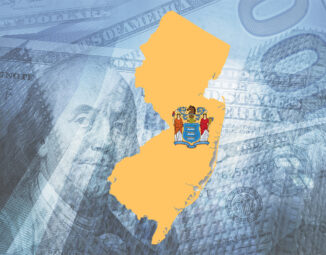Like-Kind/1031 Exchange Basics (Series Part 1)
A like-kind exchange occurs when a property owner exchanges his/her property for a property of a similar kind. More technically, the property owner sells his/her property and instead of keeping the proceeds from the sale, uses the proceeds to purchase another property or properties of a similar kind. The simplest form of like-kind exchange is the simultaneous disposing of property and acquiring one or more like-kind replacement properties. Internal Revenue Code (IRC) Section 1031 allows the taxpayer selling the property to defer his/her tax on the gains by reinvesting the proceeds from the sale in a similar property i.e. a like-kind exchange.
The benefit of engaging in a like-kind exchange is, assuming appreciation of the property, a taxpayer can parlay gains from the sale of a property into a more expensive property and continue to do so until death when the gain will be eliminated or until a later time before death, in which case, the tax will be deferred.
There are many different ways to advantageously use Section 1031 such as a reverse or deferred like-kind exchange. This post addresses a basic like-kind exchange and Section 1031 fundamentals. Obermayer will continue this series with each post discussing different like-kind exchanges and tips.
Benefits of a like-kind exchange.
Assume an investor purchases a property for $200,000 in 2010. By 2020, the property has appreciated to $600,000. Thus, the investor will realize $400,000 of gains upon the sale of the property. Assuming the investor is taxed at the federal capital gains rate of 20% (excluding state tax), the investor will have a tax liability of $120,000 ($600k x 20%) when the property is sold. At that tax rate, the investor will only have $480,000 ($600k – $120k) in sale proceeds to reinvest in another property.
However, if the same investor chose to engage in a like-kind exchange, he or she would be able to reinvest the entire sale proceeds of $600,000. This is because the investor can defer the $120,000 of tax liability. That means the like-kind investor could purchase a property with a fair market value that is $120,000 higher than a non-like-kind investor.
Who?
Owners of investment and business property may qualify for a like-kind exchange, including individuals, C Corporations, S Corporations, partnerships, limited liability companies, trusts, and other taxpaying entities.
What?
Like-kind properties are real estate properties of the same nature or character; however, quality or grade does not matter. Both properties must be similar enough to qualify as “like-kind,” for example, apartment buildings, duplexes, single-family rental properties, commercial office buildings, vacation homes (rentals), and restaurant space rental properties can all be exchanged with each other since they are all essentially the same asset. This also means that an investor can exchange one large property for several smaller ones and vice versa.
When?
In a basic like-kind exchange, there are time restrictions to abide by. First, upon sale of the exchanged property, the taxpayer has 45 days to identify, in writing, a potential replacement property.
Second, the replacement property must be purchased within 180 days after the sale of the exchanged property or within the same taxable year when the exchanged property was sold, whichever is earlier.
Reporting
Taxpayers must report like-kind exchanges each year on their tax return using Form 8824. Form 8824 will require a description of the new property and exchanged property, dates, relationships of the parties involved, gains or losses of other property given up, any cash paid or received, the adjusted basis of the exchanged like-kind property, and any realized gain. Non-reporting or inadequate reporting will make the taxpayer liable for taxes, penalties, and interest.
Tips
In a like-kind exchange transaction, the basis[1] of the exchanged property has the same basis as the property sold, with some adjustments. When the exchanged property is eventually sold (without utilizing a like-kind exchange) the originally deferred gain plus any additional gain realized since the purchase of the new property, is taxable. Death is one of the only times the basis will be stepped up to fair market value without incurring any tax liability. For example, if the investor in the example above holds onto the property until death, the property will have an adjusted basis of $600,000 instead of the original $200,000 and the investor’s heir will not be taxed on the $400,000 “gain.”
TIP: As long as the requirements are met, an investor can continue to use like-kind exchanges until death, when the continually deferred tax liability on gain will be eliminated.
Some states do not afford like-kind investors the same benefit as the federal tax code. Other states may require a like-kind investor to pay a “state mandatory withholding” tax. While other states may require a “claw-back” of taxes after the like-kind exchange. Pennsylvania is one of the only states that does not acknowledge the 1031 exchange. Instead, Pennsylvania requires taxpayers to pay a 3.07% income tax on all 1031 like-kind exchanges.
TIP: Be sure to check the laws of the state where the property is located. If you are considering engaging in a like-kind exchange in Pennsylvania, consult a tax attorney.
In conclusion, if all of the requirements and timing have been met, an investor can use a like-kind exchange to their benefit by deferring their taxable gain. This results in more money to reinvest and the opportunity to purchase more property or more expensive property. The next article in this series will discuss a reverse 1031 where the replacement property is bought before the exchanged property is sold.
[1] Tax basis is a property’s adjusted basis at the time that the property is sold. Tax basis begins at the original cost of acquiring property. During the lifetime of the property, its value may increase or decrease for such items as improvements to the property or tax depreciation. That adjusted value is called the adjusted basis. When the property is sold, the tax basis is the adjusted basis at the time of the sale. The difference between a property’s tax basis and the sale price determines whether a seller realizes a capital gain or loss and whether taxes are owed or, in the case of a loss, offset.
The information contained in this publication should not be construed as legal advice, is not a substitute for legal counsel, and should not be relied on as such. For legal advice or answers to specific questions, please contact one of our attorneys.





